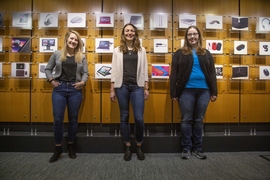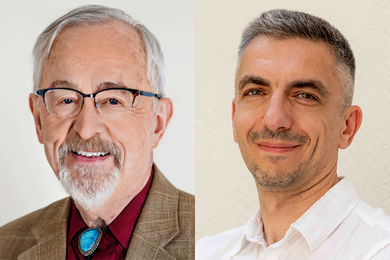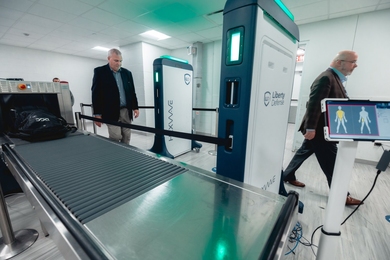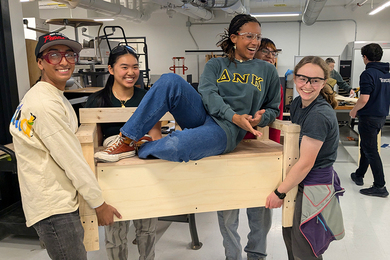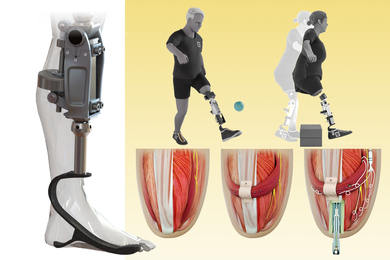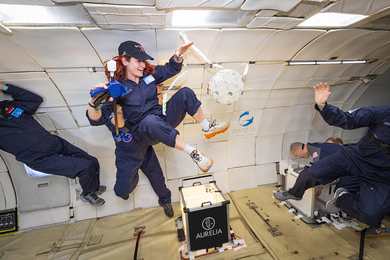Over the course of their education at MIT, mechanical engineering undergraduate students have many opportunities to build things. From robots that can accomplish complex tasks to underwater vehicles that can navigate the Charles River and functional product prototypes, Course 2 majors can often spend a lot of time “making.” But to successfully design or make anything, they need a fundamental understanding of structural mechanics.
Class 2.001 (Mechanics and Materials I) provides mechanical engineering students the foundation they need to design, build, make, and create.
“This is one of the very first classes that students take in mechanical engineering,” explains Simona Socrate, senior lecturer. “We are trying to form a basis that will allow students to tackle all kinds of problems in a structured and effective way.”
The class focuses on the mechanics of deformable structures. Students explore how structures behave under various loading conditions including axial loading, torsion, and bending. Teaching staff hope to equip students with the physical intuition and the analytical tools necessary to understand and interconnect the fundamental concepts of equilibrium, deformation, and material behavior.
“The mechanics of solids is absolutely foundational material in many different disciplines,” adds Emanuel “Ely” Sachs, professor of mechanical engineering. “It can have sustaining impact on the student.”
To help students develop a strong foundation in mechanics and materials, Socrate, Sachs, and the rest of the teaching team emphasize the act of discovery throughout the semester.
Guided discovery labs
The structure of 2.001 incorporates what are known as “guided discovery labs.” In the labs, students work on a concept or task that hasn’t yet been discussed in lectures or covered in their coursework. Teaching staff encourage students in their exploration and helping with reasoning without explicitly providing them with a solution. This format engenders “ah-ha” moments for many students.
“In lab, we try to recreate the moment of discovery — that moment of understanding something by yourself, without preexisting knowledge provided by somebody else,” says Socrate.
Each session starts with a description of an experiment that the students will do using simple hardware each student-pair has in front of them. Before doing the experiment, students are asked to predict what the results will be and write down their prediction and reasoning. The students then do the experiment and compare their observations with their predictions. If there is a discrepancy, students are asked to revisit their reasoning and predictions.
Sachs notes that the topics treated with guided discovery are deliberately chosen as the hardest for the students to internalize, based on past teaching experience. As such, the discovery process naturally involves failed predictions. For Sachs, empowering students to be comfortable with failure is central to this pedagogy and becomes part of what keeps the students engaged.
“Getting used to the notion of trying and failing is an incredibly important piece of development,” he adds. “My real goal is to teach students how to think, especially how to make artful use of both deductive and inductive reasoning, in this case in the context of engineering.”
According to Sachs, giving students this room to fail and discover something on their own helps them internalize knowledge in a way that p-sets and homework doesn’t.
Creating the guided discovery labs has been an iterative process — both with the hardware chosen for each lab and with the teaching methods — which has taken place over 10 sequential semesters of collaboration with teaching faculty and staff.
“I am so very grateful for support and collaboration from Simona Socrate, Rohan Abeyaratne, David Parks, Ken Kamrin, Marty Culpepper, Michela Geri and others in mechanical engineering, as well as Raul Rodovitsky in MIT AeroAstro, where some of these same discoveries are used in class 16.001 (Unified Engineering: Materials and Structures),” says Sachs.
Complex concepts and everyday objects
Outside the lab, lectures help students combine a physical understanding of how structures work with mathematical calculations. To keep students engaged on these complex concepts, Socrate uses everyday objects to demonstrate structural mechanics. These objects have been known to include hot dogs, mozzarella cheese, and pool noodles.
“Simona does a really good job of taking all the concepts we are learning about in class and applying them to things you’ve seen in real life,” says Talia Spitz, a sophomore studying mechanical engineering.
While learning about the structural mechanics of hot dogs infuses fun into the class, the curriculum of 2.001 can be challenging. Throughout the course of a semester, the teaching staff build a community of support and encouragement around students.
“We know that this can be a tough class, which is why the teaching staff is there every step of the way,” adds Socrate. “There is a special relationship between the teaching staff and students — we really care about their success, their life, and their learning.”
While the source material is challenging, many mechanical engineering students have found the knowledge they gain in the class instrumental not only as they progress in their education at MIT, but also as they move forward into different career paths.
“The material in this class is often the centerpiece of interviews for entry-level mechanical engineering positions at the best companies in the world,” says Sachs.
For mechanical engineering student Joshua Paul Maldonado, he plans to use the knowledge he has gained in 2.001 to make the world a better place.
“I want to create things that are going to affect and change this world for the better,” Maldonado says. “This class has given me a foundational understanding of how things work in the world. I can build upon that knowledge and make a real impact.”





